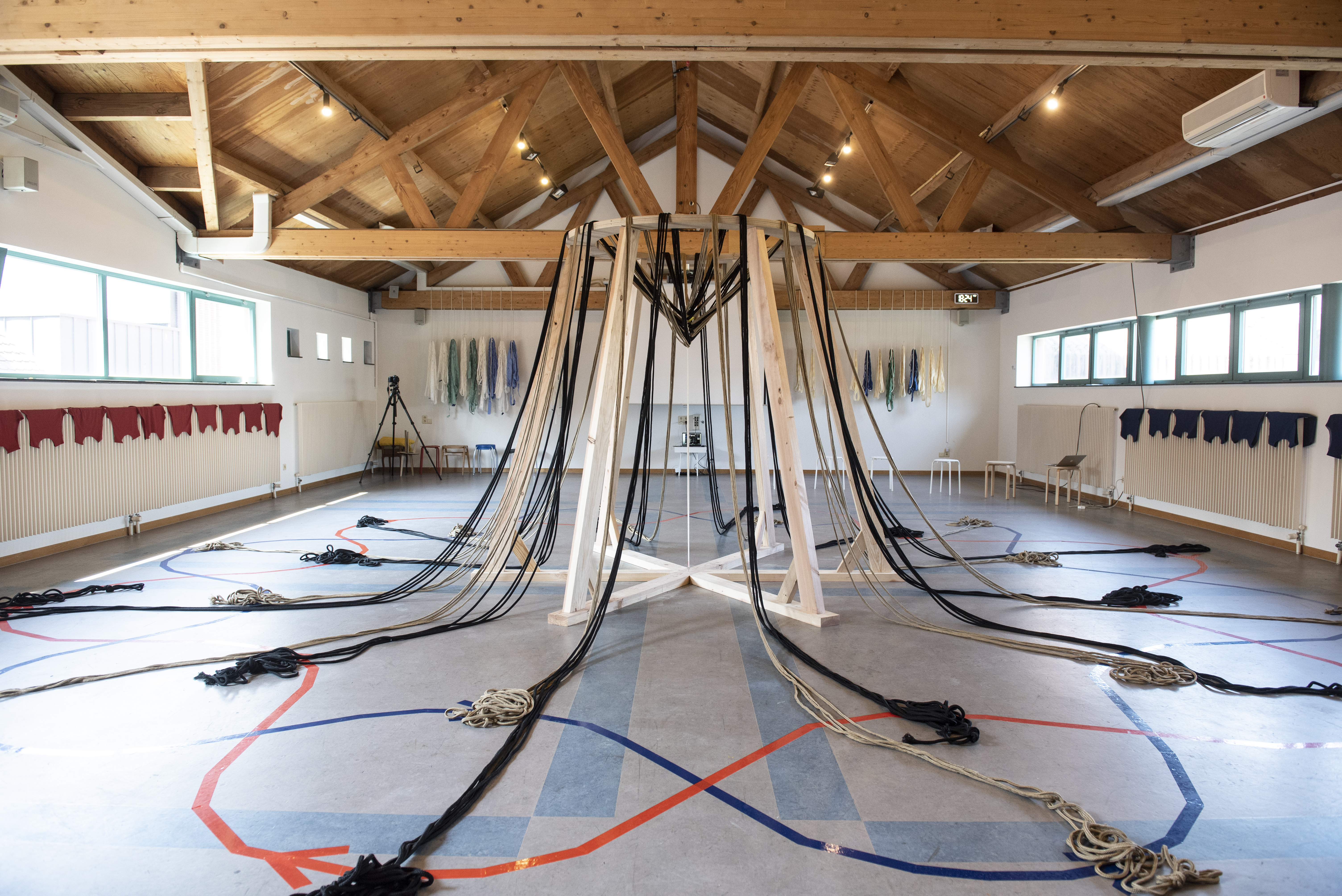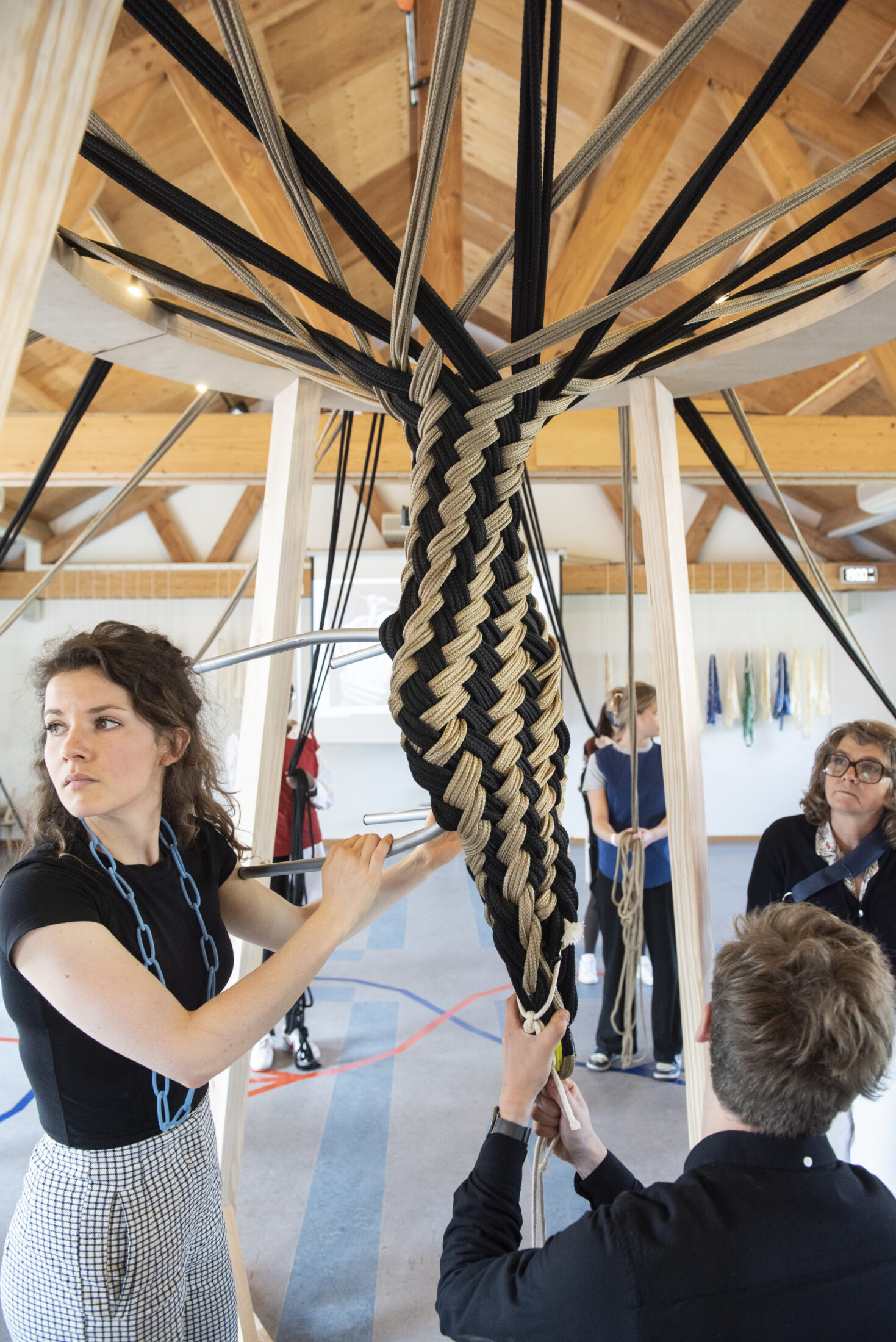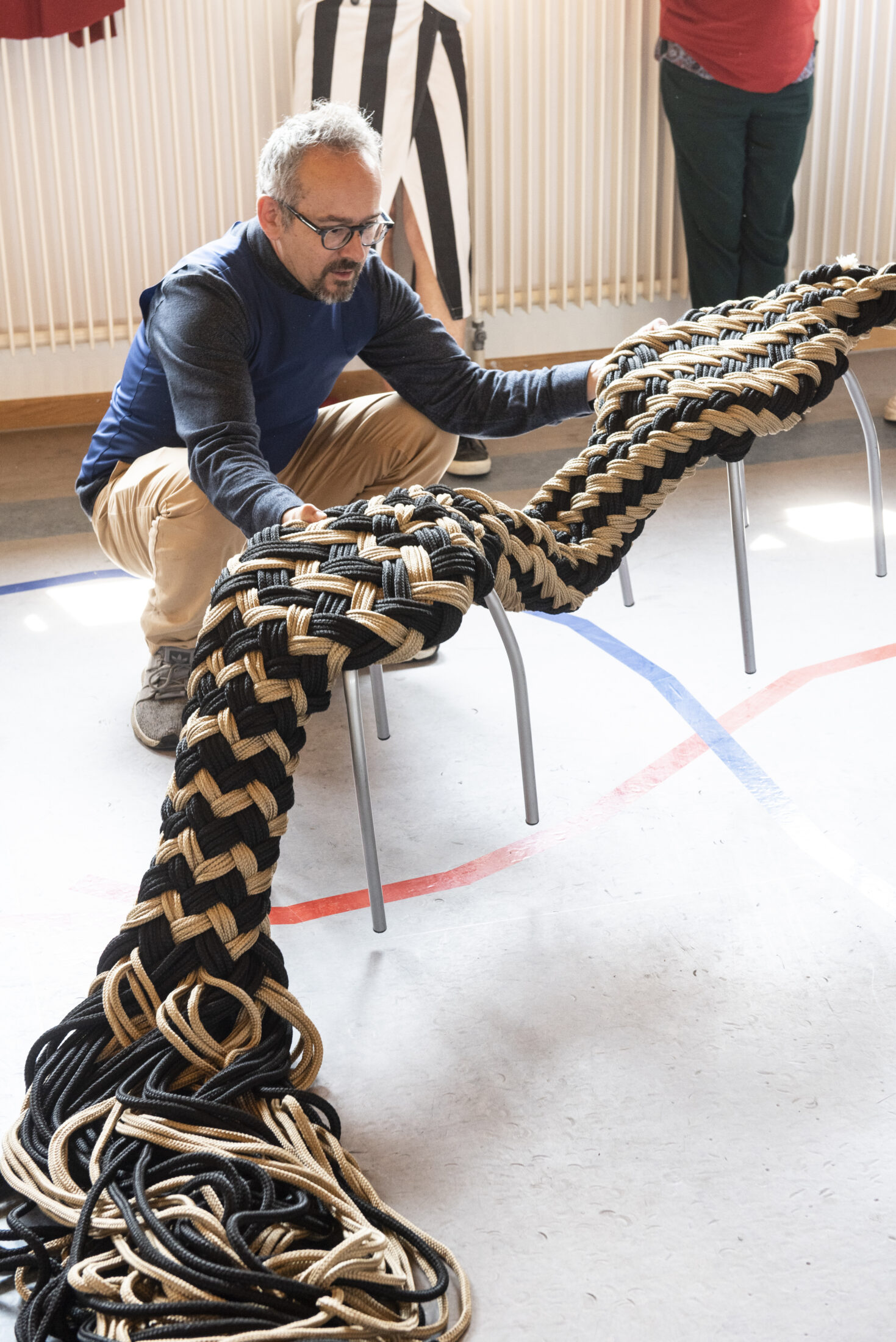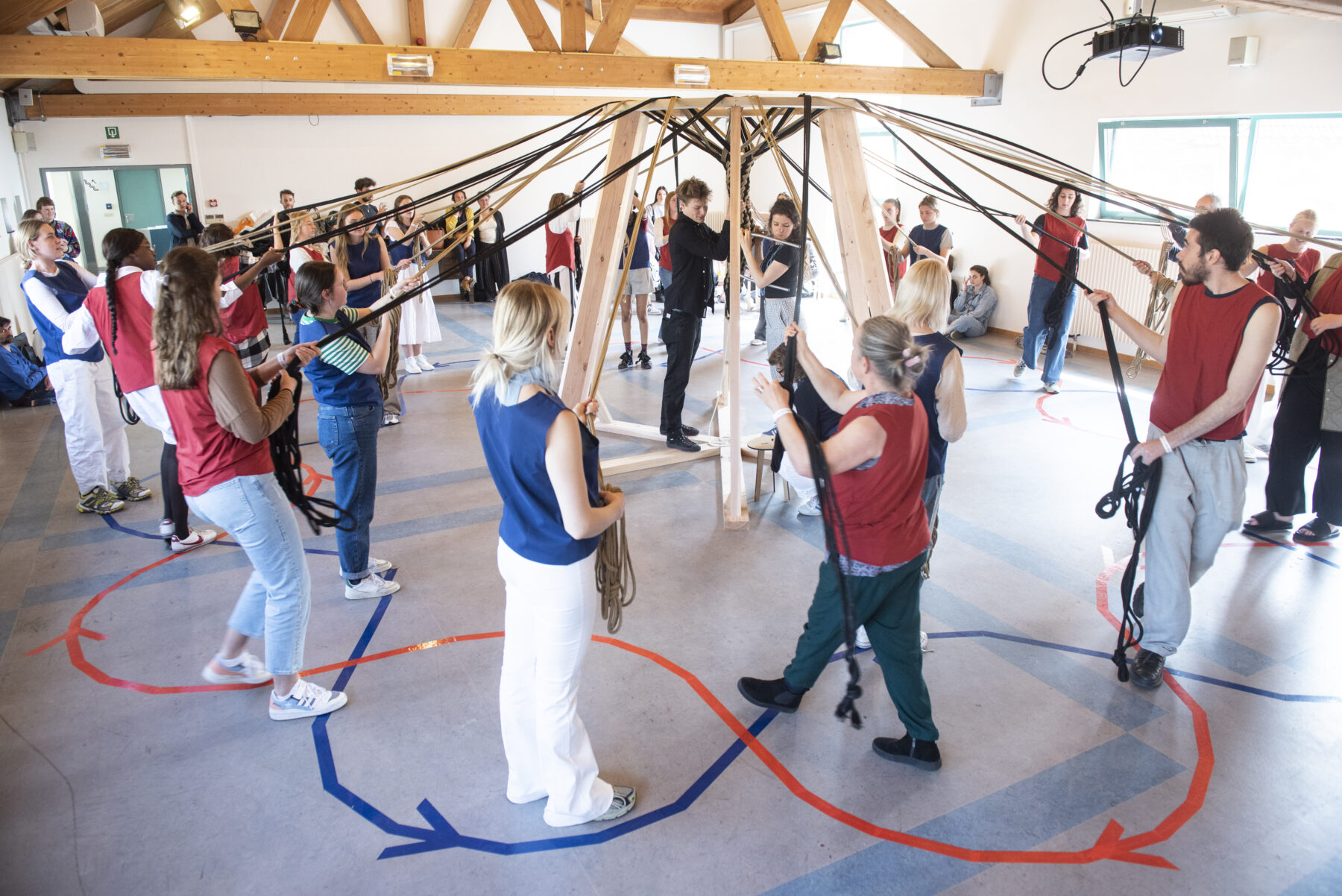Exploring the human-sized braider
Braid to Connect
Design Fest Gent
IM Gent
28/04/2022



If a dance can become a machine, would it also be possible to turn a machine into a dance again? Soft Connection Lab took the first edition of Design Fest Gent as a chance to bring this quest into practice. In close collaboration with the Dutch designer Fransje Gimbrere, who also participated in the Entrelac project at Lafayette Anticipations by Studio Hella Jongerius, and with the help of product designers Nicolas Verheusden and Victor Lemonnier, a 2,4 meters high braider came to life. During the prototyping phase, the modularity of the installation and the smoothness of the process were points of attention.
During the making performance, each team wears a colored jacket, which enhances the team spirit. At the rhythm of the central leader, the 24 makers rotate in two opposite directions, following clearly indicated, colored trackpads. The two ropes they each hold slowly create a gigantic braid, which encapsulates the two stools that were put inside.
Research questions
The performance transforms the mass-produced stools into a collectively, handmade object. The braid object is a silent witness of the communal process. Doing so, Soft Connection Lab wanted to research not only the possibilities in terms of upscaling somewhat forgotten textile techniques, but also what kind of intangible value the participative making generates.
By its quest for connecting design methodologies Soft Connection Lab wants to repair the emotional bounds between makers, consumers, objects, and our material world. The collectively made objects, for example, might carry a stronger emotional energy. Moreover, providing insight in the making process also stimulates the sense of value we attach to something, and aspects such as ‘selfmade’ and ‘collectively created’ could bring innovative power to our heritage.
Towards a versatile braiding tool
Although the created objects got undoubtedly an added value, the experiment made also clear that there were still some challenges to be covered. Firstly, it took many people and lots of time to set up. Also gathering 24 people was an extra challenge. But mainly, after all the preparation, the most essential part of the braiding – the crossing of the ropes – was not going smooth at all. This made the braiding itself less interesting for the participants, which also impacted on the intensity of their connection.
As it would take too much time to prototype a new machine and participation process, we decided to investigate other possibilities to tackle this quest. In the article The creation of a versatile braiding tool you can read how we did this.

© Aaron Lapeirre

© Aaron Lapeirre

© Aaron Lapeirre